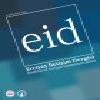Egemen Söylemin Kıyısındakiler: Alternatif Bir Platform Olarak YouTube’da Gazetecilik veGazeteciler Üzerine Bir İnceleme
On the Edge of Sovereign Discourse: A Study on Journalism and Journalists on YouTube as an Alternative Platform
___
- Antony, M. G., & Thomas, R. J. (2010). This is citizen journalism at its finest’: YouTube and the public sphere in the Oscar Grant shooting incident. New Media & Society, 12(8), s. 1280–1296. https://doi.org/10.1177/1461444810362492
- Aslam, S. (2018, January 13). YouTube by the numbers: Stats, demographics & fun facts. Omnicore. https://www.omnicoreagency.com/YouTube-statistics, Erişim Tarihi: 14.01.2020.
- Atton C and Hamilton J (2008) Alternative Journalism. London: SAGE.
- Bailey, O., Cammaerts, B., Carpentier, N. (2008). Understanding Alternative Media. London: McGraw-Hill, Open University Press.
- Başaran, F. (2010). Yeni İletişim Teknolojileri, Alternatif İletişim Olanakları/New Communication Technologies, Possibilities of Alternative Communication. Mülkiye Dergisi, 34(269), 255-270.
- Bossio, D. (2017). Journalism and Social Media: Practitioners, Organisations and Institutions, London: Palgrave Macmillan.
- Bourdieu, P. (1991). Language and Symbolic Power. Cambridge: Polity Press.
- Büyüköztürk, Ş. vd. (2014). Bilimsel Araştırma Yöntemleri. Ankara: Pegem Akademi.
- Çakır, R. (2012, 3 Eylül). Anasayfa (Videolar). Erişim adresi: https://www.youtube.com/ channel/UCfeZdjH_RKcQgJCebxUpBSw/featured
- Çoban, B. (2014). Ötekiler ve Alternatif Medya. Azınlıklar ve Medya, Suat Sungur (ed.). İstanbul: Derin Yayınları.
- Couldry, N. (2000). The Place Of Media Power: Pilgrims and Witnesses of The Media Age. London: Routledge.
- Dahlgren, P. (2013). The Political Web: Media, Participation and Alternative Democracy. Berlin: Springer.
- Değirmenci, İ. (2017, 1 Mart). Anasayfa (Videolar). Erişim adresi: https://www.youtube. com/channel/UCSQoLoVkRKf-UfCPysLk6dg/featured
- Djerf-Pierre, M., Lindgren, M., & Budinski, M. A. (2019). The role of journalism on YouTube: audience engagement with “Superbug” reporting. Media and Communication, 7(1), 235-247.
- Galip, H., İ. (2019, 12 Ağustos). Rakamlarla Youtube Platformu. https://hwp.com.tr/ rakamlarla-youtube-platformu-118480, Erişim Tarihi: 10.01.2020.
- Gözay, S. (2017, 4 Şubat). Anasayfa (Videolar). Erişim adresi: https://www.youtube.com/ channel/UCgzpeV1x1JH44L7UOBKJ5nQ/featured
- Guadagni, D. (2019, April 1). Top 20 Social Networks by Active Users 2019. https://www. innerarchitect.com/top-20-social-networks-by-active-users-2019/, Erişim Tarihi: 01.12.2020
- Gültekin, L. (2018, 16 Nisan). Anasayfa (Videolar). Erişim adresi: https://www.youtube. com/channel/UCCi9ZyZfCqCVKieVJptUKlg/featured
- Hanusch, F., & Bruns, A. (2017). Journalistic Branding on Twitter: A Representative Study Of Australian Journalists’ Profile Descriptions. Digital journalism, 5(1), 26-43.
- Hartley, J. (2005). Creative identities. In: Hartley J (ed.) Creative Industries. Malden, MA: Blackwell, 106–16.
- Hedman, U. (2016). When Journalists Tweet: Disclosure, Participatory, and Personal Transparency. Social Media+ Society, 2(1), 2056305115624528.
- Hutchins, B. & Rowe, D. (2009). From Broadcast Scarcity to Digital Plenitude: The Changing Dynamics of the Media Sports Content Economy. Television and New Media, 10(4), pp. 35470.
- Jacobs, R.N. (2000). Race, Media, and the Crisis of Civil Society: From Watts to Rodney King. New York: Cambridge University Press.
- Kavoori, A. (2015). Making Sense of YouTube. Global Media Journal: American Edition, 13(24), 1–25.
- Küçükşahin, Ş. (2013, 26 Nisan). Anasayfa (Videolar). Erişim adresi: https://www.youtube. com/channel/UCH8WfQKbNCrmwp3RqOvi_PQ/featured
- Lewis, S. & Molyneux, L. (2019, January). Social media and journalism: 10 years later, untangling key assumptions. In Proceedings of the 52nd Hawaii International Conference on System Sciences.
- McQuail, D. (2000). McQuail’s Mass Communication Theory. London: SAGE.
- Nielsen, R. K., Cornia, A., & Kalogeropoulos, A. (2016). Challenges and Opportunities for News Media and Journalism in An Increasingly Digital, Mobile, And Social Media Environment. Mobile, and Social Media Environment (December 1, 2016).
- Oğhan, Y. (2015, 4 Ocak). Anasayfa (Videolar). Erişim adresi: https://www.youtube.com/ channel/UCfeePmjEUo0PvQo7xK2yA_g/featured
- Ospina, E., O. (2019, September18). The Rise of Social Media, https://ourworldindata. org/rise-of-social-media, Erişim Tarihi: 27,01.2020.
- Özbek, G. (2017, 4 Mayıs). 23derece anasayfa (Videolar). Erişim adresi: https://www. youtube.com/channel/UCv0w8hUQ7MROrzv3yCoDX0A/featured
- Özdemir, C. (2010, 13 Aralık). Anasayfa (Videolar). Erişim adresi: https://www.youtube. com/user/dipnottv/featured
- Paulussen, S. vd. (2007). Doing It Together: Citizen Participation in The Professional News Making Process. Observatorio (OBS*) Journal, 3, s.136-137.
- Peer, L. & Ksiazek, T. B. (2011). YouTube and The Challenge To Journalism: New Standards For News Videos Online. Journalism studies, 12(1), 45-63.
- Rieder, B., Matamoros-Fernandez, A., & Coromina, O. (2018). From Ranking Algorithms To ‘Ranking Cultures’. Investigating the modulation of visibility in YouTube search results. Convergence, 24(1), 50–68. doi:10.1177/1354856517736982
- Schiavenza, M. (2015, February 14). How YouTube Changed Journalism. https:// www.theatlantic.com/technology/archive/2015/02/how-YouTube-changedjournalism/385523/, Erişim Tarihi: 29.01.2020.
- Snickars, P. & Vonderau, P. (2009). The YouTube Reader. Stockholm: National Library of Sweden.
- Soukup, P. A. (2014). Looking at, with, and Through YouTube. Communication Research Trends, 33(3), 3-34.
- Sumiala, J. M. & Tikka, M. (2013). Broadcast Yourself Global-News! A Netnography Of The “Flotilla” News on YouTube. Communication, Culture & Critique, 6(2), 318–335. doi:10.1111/cccr.12008
- Taylan, A. (2012). Alternatif Medya ve Bianet Örneği: Türkiye’de Alternatif Medyaya Dair Etnografik Çalışma, Ankara Üniversitesi Sosyal Bilimler Enstitüsü (Doctoral dissertation, Doktora Tezi, Ankara).
- Ünlü, Ü. (2014, 4 Mart). Anasayfa (Videolar). Erişim adresi: https://www.youtube.com/ channel/UCzJMy0X4vYivbZHkNccpPhQ/featured
- Yüncüler, Z. (2018, 26 Şubat). YouTube’da Gazetecilik: Abone, Reklam, Sponsor Ekseninde Özgürlük. https://journo.com.tr/YouTube-gazetecilik-abone-reklam-sponsorozgurluk, Erişim Tarihi: 28.01.2020.
- ISSN: 1308-3198
- Yayın Aralığı: 2
- Başlangıç: 2009
- Yayıncı: Erciyes Üniversitesi İletişim Fakültesi
Pamuk Prenses ve Yedi Cüceler Masalının Üç Hali: Grimm Kardeşler, Walt Disney Ve Ertem Göreç
11 Eylül Sonrası Hollywood Sinemasında İslamofobinin Yeniden Üretimi
Mahmut Yavuz TÜRKMEN, Meral ÖZÇINAR
Dasein’ı Filmozofik Düşünmek: Bir Film-Zihin Olarak ‘Hayat Ağacı’
Reklam Mecrası Instagram: TOGG ve GÜNSEL Elektrikli Otomobil Markaları Üzerine Ampirik Bir Araştırma
Dijital Oyunlarda Reklam: Çocuk ve Ebeveyn Perspektifinden Bir İnceleme
Netnografik Analizle Türkiye’de YouTuberlar ve Değişen Ahlaki Panik Fenomeni
Özden ÖZLÜ, Gülseli Aygül ALAN
Nilay AKGÜN AKAN, Emel TANYERİ MAZICI
